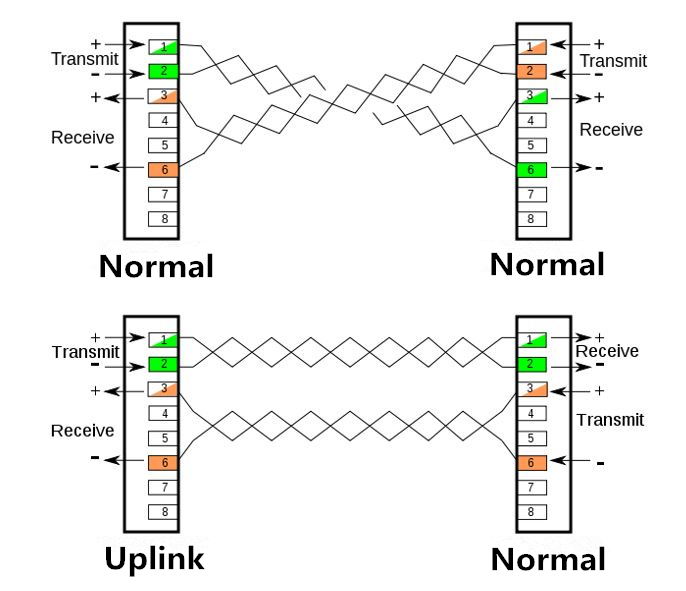When it comes to network switch, we usually ask about the port type on the switch and the number of port, such as twenty-four 10/100/1000 Mbps ports and four SFP+ ports. If you have used managed switch in your network deployment, you must have heard about uplink port or normal port. How much do you know about them? Is there any difference between them? This article will guide you to learn about uplink port vs. normal port on switch.
Uplink Port Vs. Normal Port: Connect to Different Devices
The uplink port on switch is used to connect a device or smaller local network to a larger network, or connect to the next “higher” device in the topology. For example, edge switch connects “up” to distribution layer managed switch. Also in computer network, hub, unmanaged switch and router typically designate one Ethernet port as the uplink port. And it may be labeled WAN or Internet instead of uplink. This type of port simplify connects different types of Ethernet devices to each other, such as when linking a local home network to a modem and the Internet. While normal port on switch is used to connect end user PC or server and all. In most cases, uplink ports have more bandwidth as compared to normal ports as they aggregate traffic between different layers.
Uplink Port Vs. Normal Port: Connect to Different Cables
Each Ethernet interface has two transmit pins and two receive pins. To achieve the link connection, the transmit pins at one end of network cable have to be connected to the receive pins at the other end. An uplink port does not crossover the transmit and receive pins, but a regular port does. Therefore, when two network switches are connected together with a straight-through cable, then one end must be uplink port and one end must be normal port. If a crossover cable is used to connect them, then the ports at both ends must be the same kind of port. Here is a figure for you to have a better understanding of this.

Uplink Port Vs. Normal Port: Additional Information about Shared Port and Dual-purposed Port
Some older network equipment specially configured a normal port next to the uplink port and linked the two together as a pair. Specifically, the hardware logic of these products supported connections to either the uplink port, or the normal shared port, but not both. Connecting devices to both ports of a shared port device stops the unit from functioning properly. Nowadays, many network equipment offer a dual-purpose port which can function either as an uplink or a normal port depending on the type of device connected to it.
Conclusion
In fact, uplink port can serve as normal port. Therefore, there are no big differences between them. The only difference is that uplink port is connected to higher layer network device to aggregate the bandwidth and must be connected to the normal port on another network device. I hope after reading this article, you can be clear on uplink port vs. normal port on switch.
Related Article: Smart Managed Switch Vs. Unmanaged Switch
FS.COM LAN Access 10G Switch Analysis
